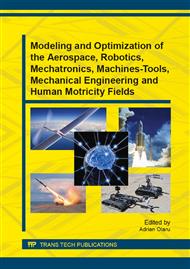p.561
p.567
p.575
p.580
p.586
p.593
p.601
p.609
p.616
Parallel Evolutionary Algorithm for Computationally Expensive Single Criteria Design Optimization
Abstract:
The paper presents an approach to design optimization using parallel evolutionary algorithms. The only use of a simple evolutionary algorithm in order to generate the optimal solution for complex problems can be ineffective due to long calculation time. Thus a tournament evolutionary algorithm (EA) and a parallel computation method are proposed and used. The proposed EA does not require an analysis of the optimization model for each potential solution from evolutionary populations. The second element of the method consists in parallel running of evolutionary algorithms using multi-threads approach. The experiments were carried out for many different single design optimization problems and two of them are presented in the paper. The first problem considers a task of robot gripper mechanism optimization and the second one deals with the optimization of a shaft based on Finite Element Method analysis. From the generated results it is clear that proposed approach is a very effective tool for solving fairly complicated tasks considering both the accuracy and the time of calculation.
Info:
Periodical:
Pages:
586-592
Citation:
Online since:
June 2014
Authors:
Price:
Сopyright:
© 2014 Trans Tech Publications Ltd. All Rights Reserved
Share:
Citation:


